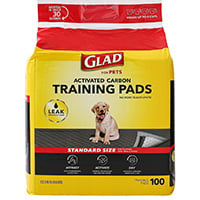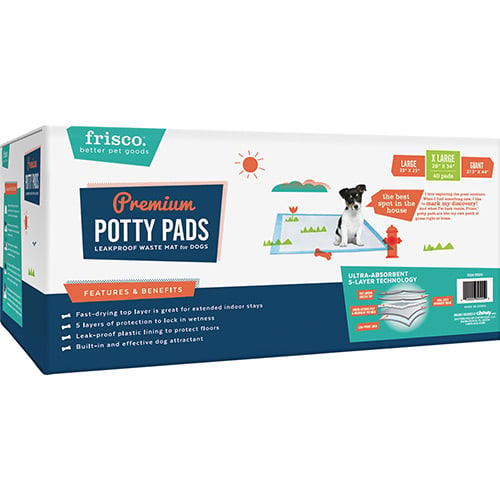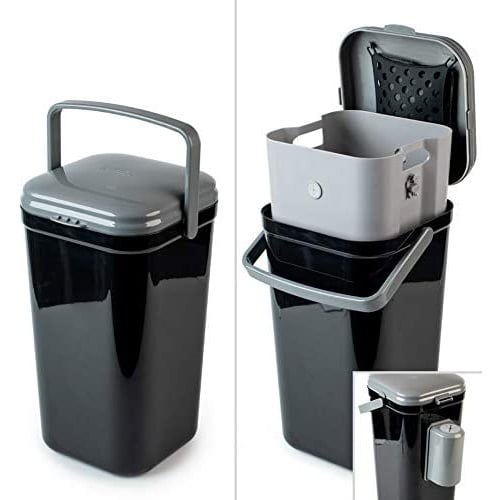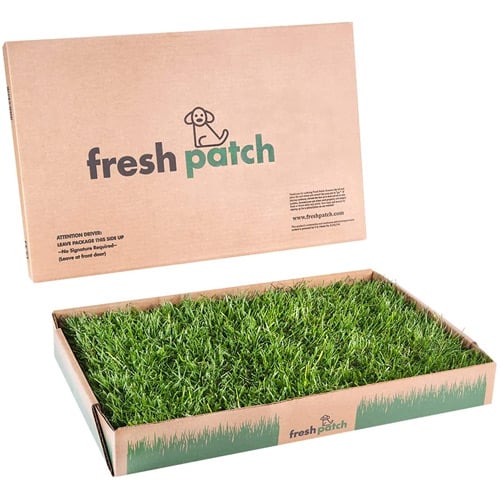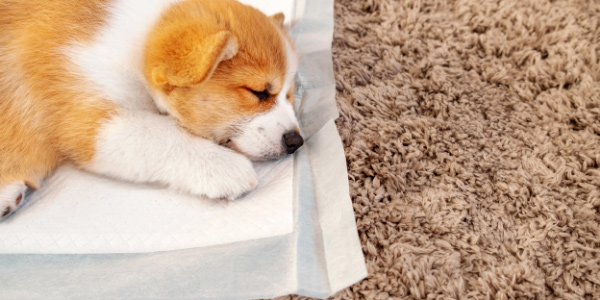 Congratulations on your new puppy!
Congratulations on your new puppy!
Puppyhood is a fun stage of your dog’s life, where you’ll get lots of licks and laughs, but there’s also lots of work to do to set your puppy up for success.
You want to make sure you show your pup how to be a well-behaved member of the family, and if you value your floors and your sanity, it starts with potty training.
You might be considering using puppy pee pads to help housebreak your pup. In my professional opinion, I prefer to set a puppy up for success from the beginning and teach them to only go potty outside.
However, if it’s difficult to provide frequent potty breaks for your puppy due to your schedule, personal circumstances, or living situation (especially if you're an apartment-dweller), pee pads or a dog porch potty can be a useful tool. Pee pad training can also be used for young, unvaccinated litters of puppies or for older pets who are sick or might otherwise have trouble getting outside (e.g., arthritis, neurologic problems).
Below is a review of some of the pros and cons of pee pad training for your puppy.
Pros of Pee Pad Training
- Can be convenient: You can place pee pads anywhere. In many cases, it may also be quicker and more easily accessible to get to a pee pad, rather than outside or all the way down the elevator, before an accident happens. For example, if you are mobility impaired or live on an upper floor of a tall apartment building, it's much easier to get your puppy to their pee pad area than make the long trip downstairs to get them outside.
- Easy clean-up: Like a diaper, pee pads soak up the mess, and you can simply toss them in the trash. Or you can buy reusable, washable ones.
- Creates an appropriate potty spot: Pee pads can encourage your puppy to potty in the right place with a built-in attractant. You can also purchase potty attractant spray to use on your dog's porch potty and even use it to encourage your dog to go potty in certain parts of the yard over others.
Pee pads or dog litter boxes create an appropriate potty area in your puppy's long-term confinement zone, helping your puppy learn to go to the bathroom away from their sleeping area. - Weather friendly: For all those times when it’s just downright nasty out, and the idea of taking your dog out to potty makes you want to cry, pee pads give your dog an indoor bathroom option. Some pups have a hard time going potty outside in inclement weather because they’re uncomfortable or distracted. No trip outside is necessary for pee pad-trained pups.
Pro Tip: If you're using potty pads or a porch potty, you'll want somewhere convenient to throw away any waste. Instead of making the trek to the trash can every time you pick up your puppy's poo, invest in a small dog waste station with deodorizer, like this one from PetFusion.
I have one on my patio and love that I don't have to carry the poo bags all the way back to the dumpster behind our townhome. It has a locking lid and includes a charcoal filter that helps reduce odor, and it's lightweight and portable – making trips to toss the poo in the outdoor garbage less frequent!
Cons of Training Your Puppy to Use Pee Pads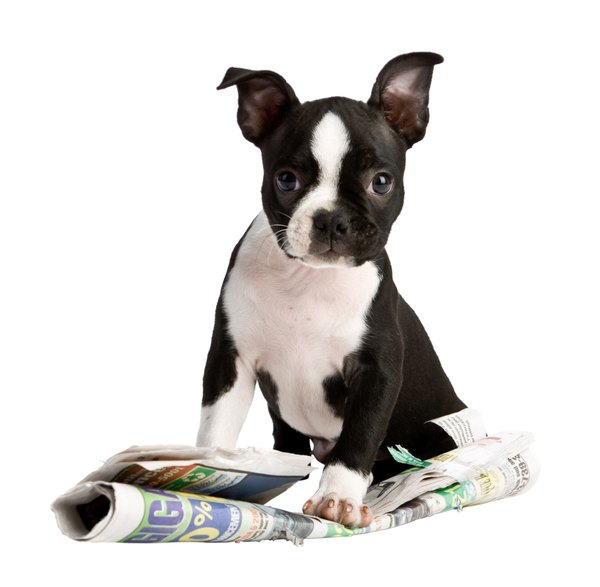
- Anything could be a pee pad: Teaching your pup to pee on a thin paper pad may also teach them that it’s okay to pee on similar items. They might consider the newspaper you tossed on the floor as fair game for a potty spot.
Some dogs who use pee pads generalize to going to the bathroom on any square mat or rug in the house. Watch out when you step out of the shower!
- Set-up for outdoor potty training failure. By allowing your puppy to eliminate indoors while also trying to train them to go potty outside, you are sending mixed messages. This confusion can delay the desired habit of holding it until they can go outside.
Plus, your puppy could become dependent on their pee pads. It can be a long process to transfer your dog’s potty habits from indoor pee pads to only outdoors. To learn about the process and get started, check out my article "Training Your Dog to Stop Using Pee Pads."
- Chewing and shredding risk: Puppies like to explore the world with their mouths. Placing pee pads on the floor may just be an open invitation for your pup to go into shredding (and swallowing) mode.
- Pee pads = comfy resting spot! Many puppies make a bed out of their potty pads. Not only does this work against the natural instinct to not potty where they rest (often delaying potty training success), but it also means that they get dirty and smelly from laying down in their own waste.
- Tasty snack: Some puppies like to eat their own stool (a habit known as coprophagia) if given the chance. Using potty pads provides them the opportunity to practice this behavior because they are not being supervised as they would be on a leashed potty break.
- Missing out on fresh air and socialization experiences. While pee pad training can be more convenient and can keep you both warm and dry when the weather isn’t cooperating, one of the great joys and benefits of having a dog is that you get outside and enjoy the fresh air more often. These outdoor excursions also give you the opportunity to meet other people or dogs in your community. Pee pad training can deprive your pup of the benefits of socialization.
Potty Training With a Pee Pad —Things to Consider
Should you decide that indoor potty options are necessary for your situation, here are a few tips and recommendations to consider.
1. Instead of pee pads, consider potty boxes that use turf or real grass to help develop the association that grass is the appropriate place to go potty. I've used the Fresh Patch with my puppy and appreciate the auto-shipping feature for subscribers.
You can even make your own DIY porch potty, like in this video:
2. As your puppy becomes accustomed to using their indoor potty area, gradually move it closer to the outside potty area to work on training them to go to the desired destination.
3. Never leave pee pads in the crate with your puppy. Not only is it a chewing hazard, but it will also start to teach your puppy that it is ok to pee in their crate. Pee pads can be used in long-term confinement areas for your puppy. Check out this puppy zone article for more information on the best way to set up their space.
Should You Use Potty Pads with Your Dog?
Now that you have all of the facts consider whether you have the means to take your puppy outside for every potty break. Use indoor potty options only if you truly need them — and here’s an article on how to “pee pad” or paper train a dog. But keep in mind that by consistently taking potty breaks outside, you and your pup will be on the most direct route to true and successful potty training.
Whichever way you go, good luck, and stay positive with your pup’s potty training. It can be frustrating, but it's rewarding! And if they're continuously having accidents check out our article on Potty Accidents to try to uncover the problem.
Do you have any tips and tricks for potty training?
What's worked and what hasn't for you and your pup? Share in the comments below!


